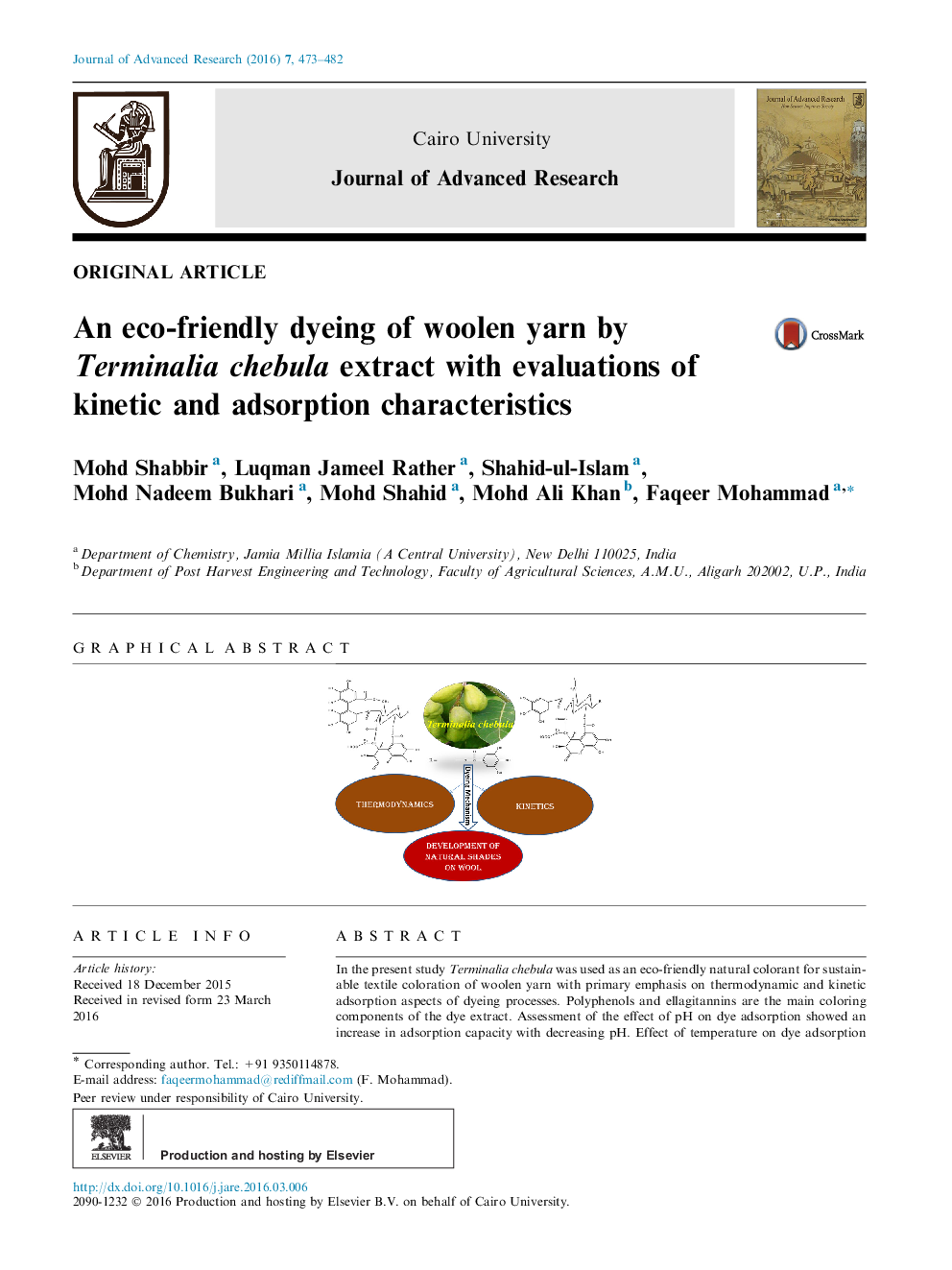| Article ID | Journal | Published Year | Pages | File Type |
|---|---|---|---|---|
| 826059 | Journal of Advanced Research | 2016 | 10 Pages |
In the present study Terminalia chebula was used as an eco-friendly natural colorant for sustainable textile coloration of woolen yarn with primary emphasis on thermodynamic and kinetic adsorption aspects of dyeing processes. Polyphenols and ellagitannins are the main coloring components of the dye extract. Assessment of the effect of pH on dye adsorption showed an increase in adsorption capacity with decreasing pH. Effect of temperature on dye adsorption showed 80 °C as optimum temperature for wool dyeing with T. chebula dye extract. Two kinetic equations, namely pseudo first-order and pseudo second-order equations, were employed to investigate the adsorption rates. Pseudo second-order model provided the best fit (R2 = 0.9908) to the experimental data. The equilibrium adsorption data were fitted by Freundlich and Langmuir isotherm models. The adsorption behavior accorded well (R2 = 0.9937) with Langmuir isotherm model. Variety of eco-friendly and sustainable shades were developed in combination with small amount of metallic mordants and assessed in terms of colorimetric (CIEL∗a∗b∗ and K/S) properties measured using spectrophotometer under D65 illuminant (10° standard observer). The fastness properties of dyed woolen yarn against light, washing, dry and wet rubbing were also evaluated.
Graphical abstractFigure optionsDownload full-size imageDownload as PowerPoint slide
